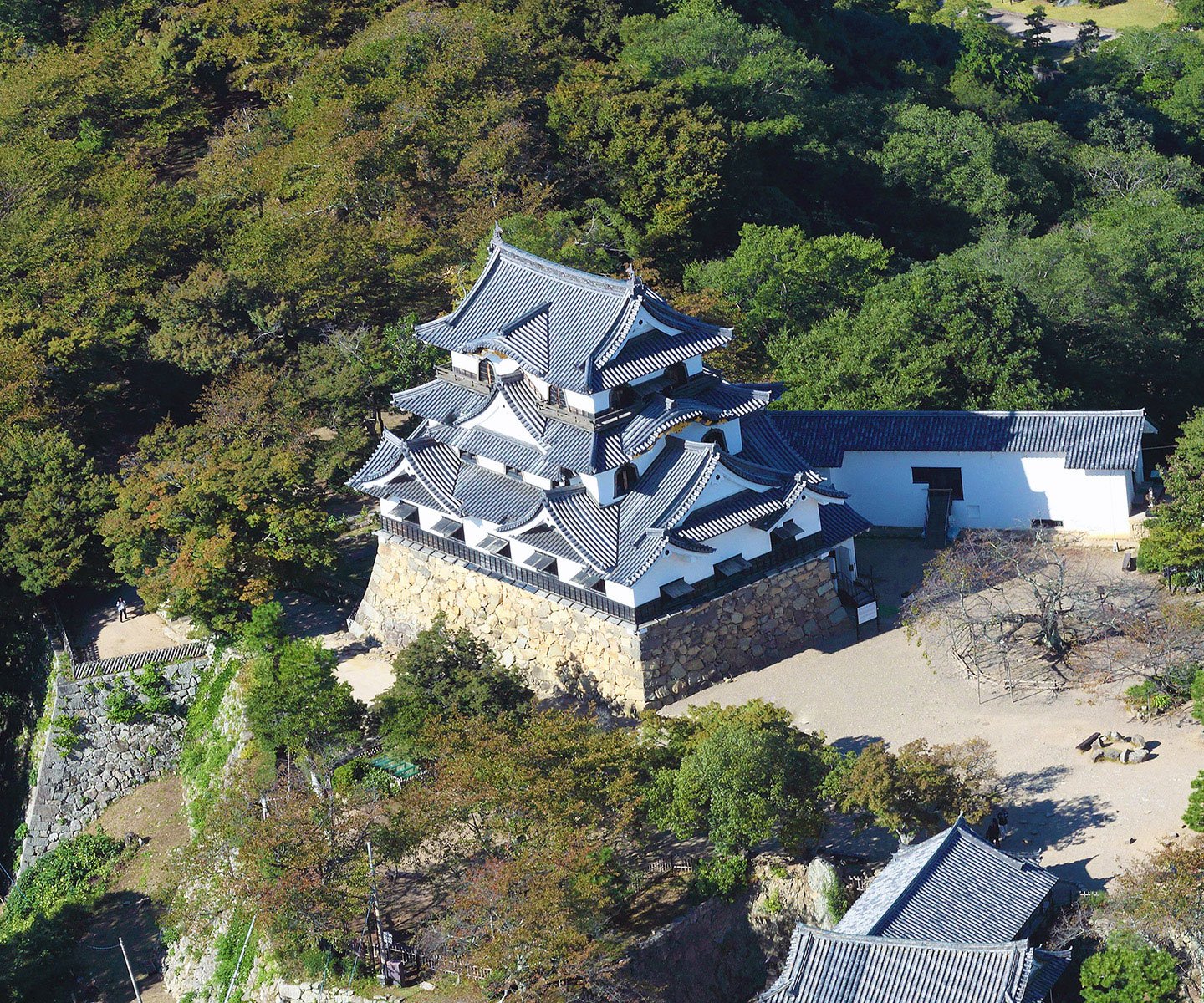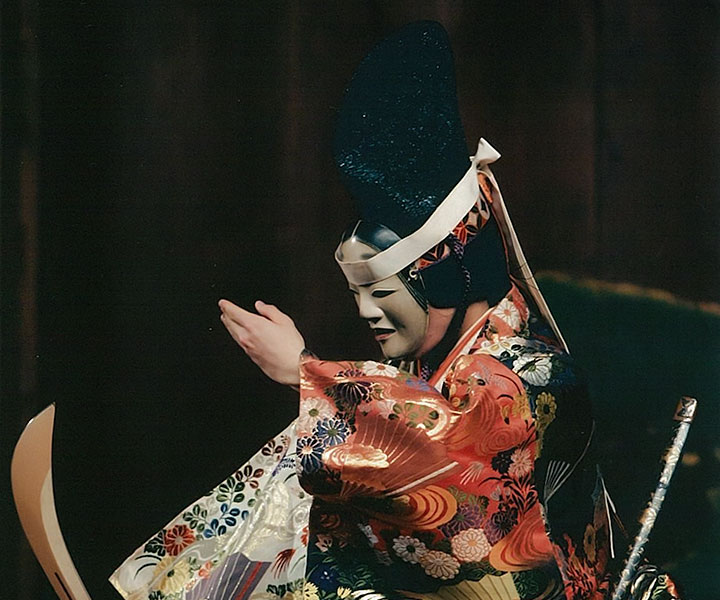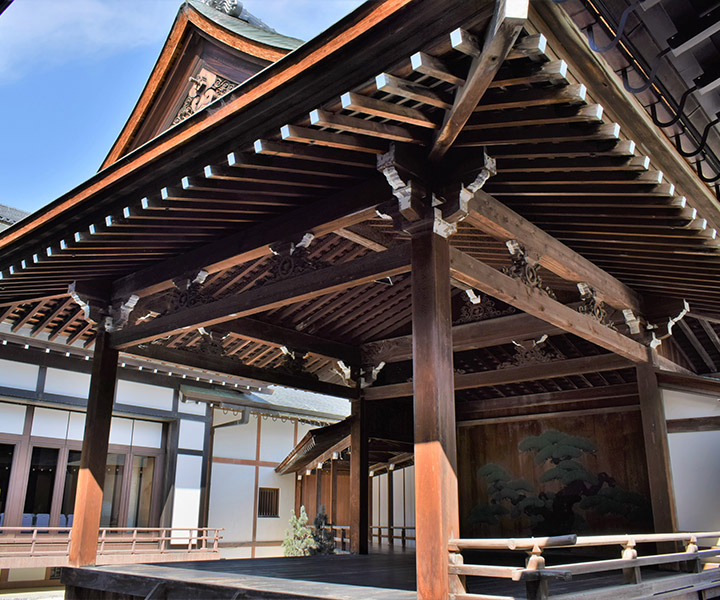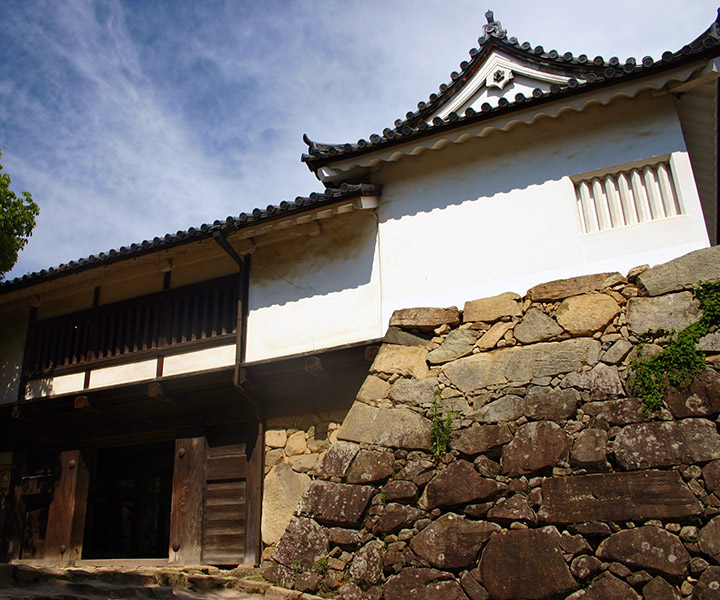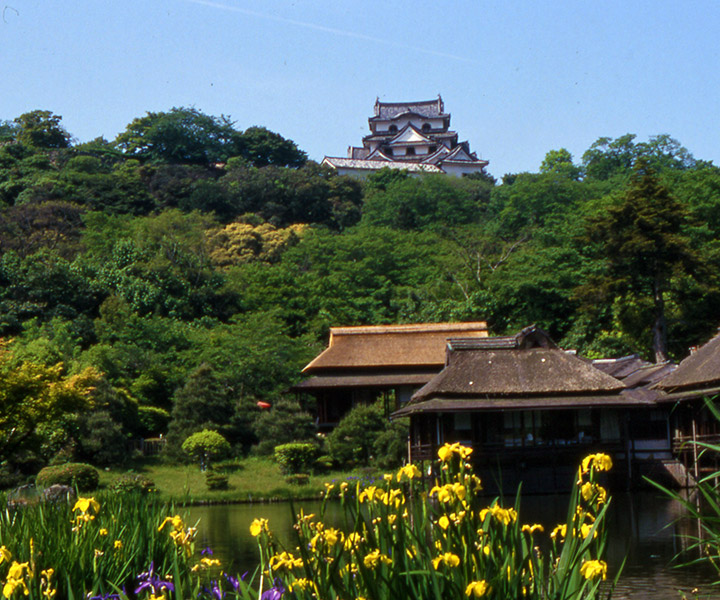- TOP
- 能楽を旅する 彦根城_en
Main Figures Related to the History of Hikone Castle
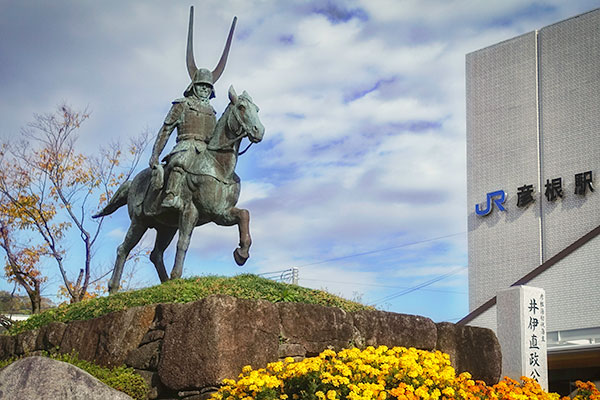
The castle was built by a descendant of Ii Naomasa, one of the four guardian kings of the Tokugawa domain
Hikone had a castle called Sawayama Castle. Ishida Mitsunari lived in that castle. After Ishida Mitsunari died in the Battle of Sekigahara, Ii Naomasa became the lord of the castle instead.
Ii Naomasa tried to repair the ruined Sawayama Castle, but eventually gave up. He searched for new land to replace the ruined castle, but in the process he died of an illness. His son Ii Naotsugu succeeded him and in 1604 began building a new castle on Mt. Hikone.
After that, his younger brother Ii Naotaka departed for the Winter Siege of Osaka in place of his older brother Ii Naotsugu. Due to this achievement, Ii Naotsugu became the lord of the Hikone domain.
Hikone Castle was completed in 1622 (during Naotaka Ii's reign).
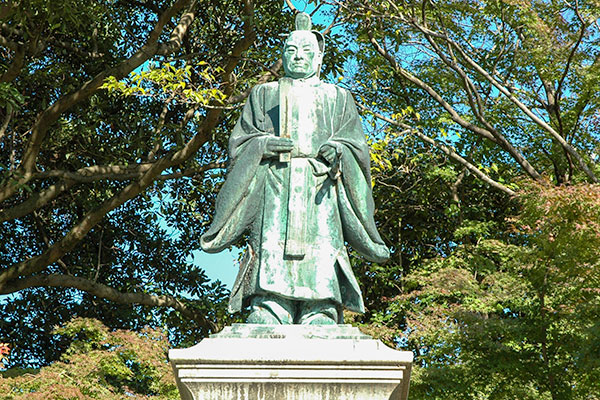
The fourteen generations of the Ii family, including Ii Naosuke, have served as successive lords of the castle
After Hikone Castle was completed, the Ii family served as the lord of the castle until the end of the Edo period. The most famous lord is Ii Naosuke, the 13th generation leader.
After Naosuke was assassinated in the Sakuradamongai Incident, his second son Naonori succeeded him as the last lord of the domain. Hikone Castle was built with the purpose to be used in a battle, but it has not been used once and Hikone domain was abolished.
After that, Hikone Castle was in danger of being demolished due to the castle destruction during the Meiji Restoration (a time period where domain lords where overthrown in order to restore complete rule to the Emperor). However, because the Meiji Emperor ordered the preservation of Hikone Castle, it remained until today.
- The number of Ii family leaders are mentioned on the Hikone Castle Museum official website.
Discover the Relationship Between Hikone Castle and Noh!
Hikone Castle×Noh
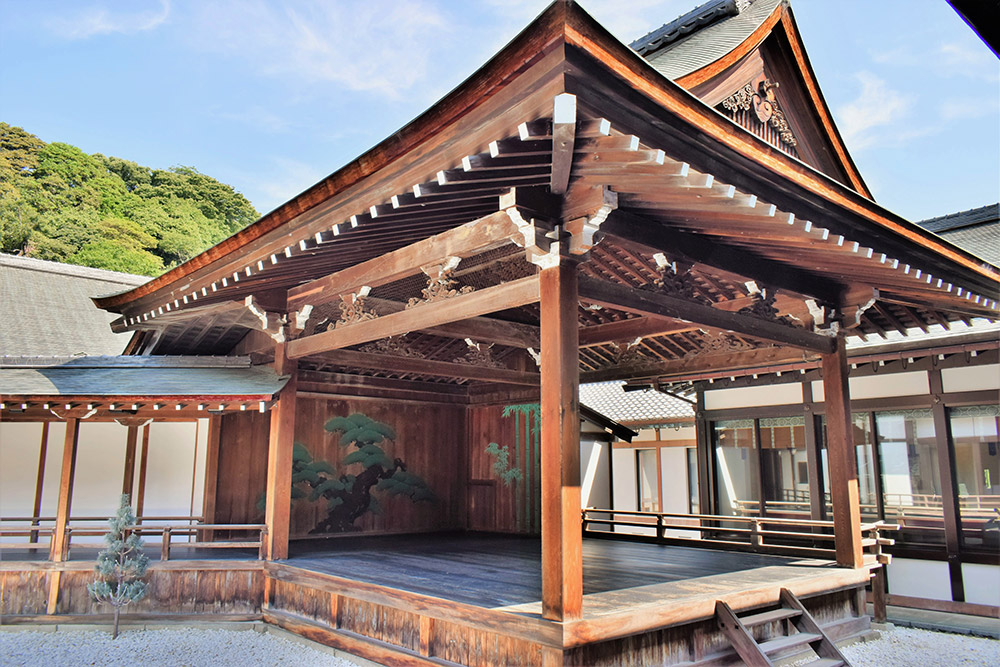
A Noh stage built in the Edo period still exists at Hikone Castle!
Noh was most popular at Hikone Castle during the times of Ii Naoyuki, the 10th generation, and Ii Naonaka, the 11th generation. In 1800, Ii Naonaka, who had been familiar with Noh since his childhood, built a new Noh stage inside the castle.
After the Meiji period, the Noh stage was moved to Ii Shrine, and then moved from shrine to shrine in Hikone City. In 1985, the stage returned to Hikone Castle. Hikone Castle remains the only castle built during the Edo period that still has an actual Noh stage.
Every year, the "Hikone Castle Noh" and "Kyogen no Tsudoi" performances are held on this very valuable Noh stage. Both are known as popular Noh stage performances with a long history.
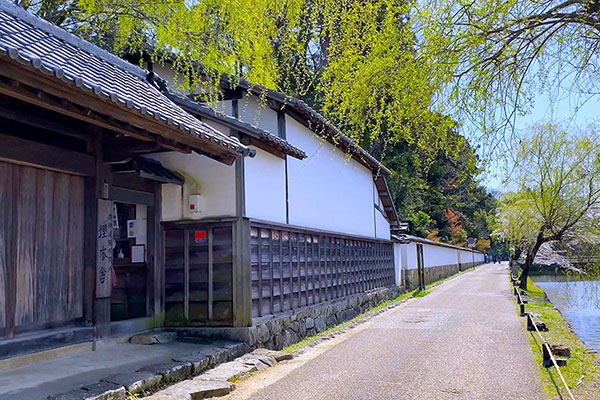
As Ii Naosuke lead the opening of Japan, he also worked on reviving Noh and Kyogen performances
The thirteenth generation, Ii Naosuke (1815-1860), created his own new Noh and Kyogen pieces.
Ii Naosuke was born as the 14th son of the 11th generation's Naonaka. After his father's death, he lived in a residence in Sannomaru, which he named Umoreginoya (photo), likening himself to a "buried tree" that never bloomed. During the 15 years between the ages of 17 and 32, he practiced various arts, such as the Japanese language, tea ceremony, waka poetry, military arts, iai (Japanese martial art of the sword-drawing technique), and Zen, and was also passionate about singing and playing the hand drum.
Under these circumstances, he created the Noh "Tsukumae" and the Kyogen "Onigayado", and even revived the Kyogen "Tanuki Haratsuzumi (Raccoon Belly Drum).”
Noh「筑摩江(Tsukumae)」
The only Noh that Ii Naosuke created, "Tsukumae," has many highlights, such as a song that incorporates famous places that can be seen from Lake Biwa, a Kyogen performance that shows the Nabekanmuri Festival, and a dance of the three gods. However, there have not been many opportunities to perform it, although in recent years it was performed at the Yokohama Noh Theater in 2019.
- Synopsis
-
A number of vassals who serve the emperor were on the way to visit the Tsukuma Shrine in Maibara City, Shiga Prefecture. On the way, they meet some fortune tellers and head to the shrine with them. Upon arrival, they tell the vassals about the three deities enshrined there. When the vassals asked the fortune tellers, shrouded in mystery, of their true form, they suddenly disappeared into the shrine. Not long after, Shinto priests and women appeared to perform dances dedicated to Miketsunoshin (the god of harvest) to wish for him to bless a bountiful harvest and for his auspicious reign.
Kyogen「鬼ヶ宿(Onigayado)」
The Kyogen "Onigayado", created by Ii Naosuke, was based on the Noh "Kurozuka (Adachigahara)" and is said to have been premiered by Shigeyama Sengoro IX a few days before Ii Naosuke was assassinated. It is a piece handed down to Shigeyama Sengoro's family of the Okura School of Kyogen, who were Noh actors employed by the Hikone domain.
- Synopsis
-
Taro visits the house of a woman in Adachigahara who has been neglecting him recently. Having lost her affection for Taro, she wishes he would be sent away as soon as possible. Taking advantage of Taro's desire for sake, the woman says, "I don't have any at home, so please go buy some for me”. Since demons have been seen on the roads nearby at night, she tells him to be careful. But when Taro finally returns with the sake...
Kyogen「狸腹鼓(Tanuki-no-haradutsumi)」
Kyogen "Tanuki Haratsuzumi (Raccoon Belly Drum)" is a Kyogen that Ii Naosuke estored in 1852, and also goes by the name "Hikone Tanuki". Today, it has been handed down in the Okura and Izumi schools of Kyogen. There are differences in the script and direction depending on the school and family, however this is the most prestigious program.
- Synopsis
-
Just when the hunter thought he had caught the tanuki(Raccoon Dog), the tanuki's wife, disguised as a nun and worried about her husband, appears before him. The nun makes the hunter promise to stop killing. The nun, surprised by the barking of a dog, let her disguise slip and revealed her true form to the hunter. The female tanuki begged for him to spare her life, which he agreed to on the condition that she would beat her belly drum. She turns back into a tanuki and while the hunter dances absorbed in the music, she manages to slip away and escape.
A Splendid Castle on the Banks of Lake Biwa With a History of 400 Years
Highlights of Hikone Castle
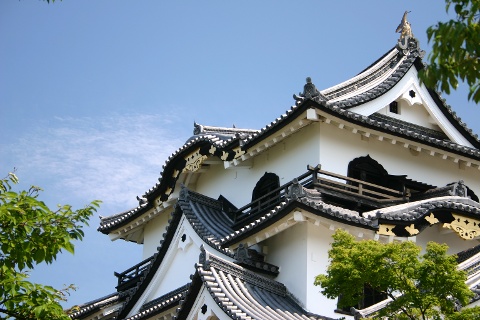
A Beautiful National Treasure Keep
Hikone Castle is a castle built on Mt. Hikone. Mt. Hikone is known as Mt. Konki, therefore Hikone Castle is also called "Konki Castle".
The three-story castle tower retains its original appearance from the Edo period and is designated as a national treasure.It has a variety of splendid decorations and beauty not found in other castle towers.
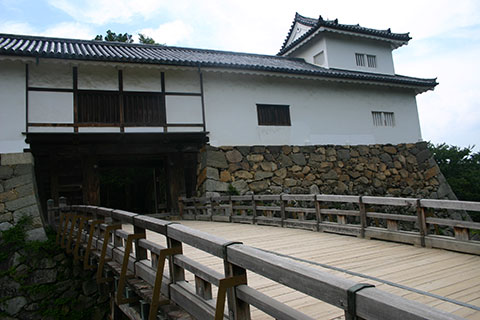
A Tenbin Yagura Which Can Only Be Seen Here
Hikone Castle features not only castle towers but also many other structures, such as yagura (turrets).
The Tenbin yagura (photo), which is designated as an Important Cultural Property of Japan, is an unusual feature. It was built to prevent enemy invasion by destroying the connecting bridge in the center during wartime.
In addition, the Stables with beautiful shingle roofs also remain today within the castle grounds.
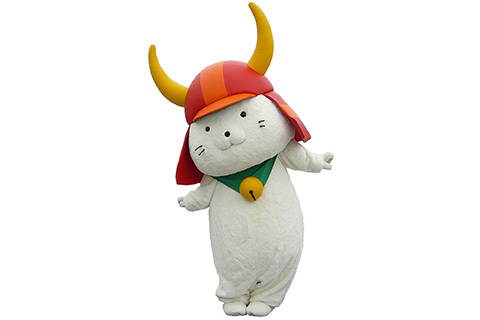
You Can Even Meet “Hikonyan” Inside the Castle!
Inside the castle, you can also meet Hikone City's mascot, "Hikonyan". Check the daily schedule on the Hikonyan official website to see when you can meet him.
"Genkyuen Gardens" in the outer citadel is also a must-see. The garden has been maintained since the early Edo period, and has been designated as a national scenic spot along with the neighboring villa "Rakurakuen". The garden is famous for its cherry blossoms in spring and autumn leaves, which are lit up during the peak viewing period, allowing you to enjoy the fantastic scenery.
Access
- Address
1-1 Konkicho,
Hikone-shi, Shiga 522-0061
Japan- Phone
- Traffic Guide
About 10 minutes walk from JR Hikone station
- Parking Lot
Ninomaru parking (Closest to the Castle). There are four other locations.
- Official Web Site
Photo Gallery

The castle tower, designated as a national treasure, can be seen peaking through the fully bloomed cherry blossoms on top of the stone wall.

The castle tower can be seen beyond the autumn leaves

The original military facility of the castle, which ropes Hikone Castle



Photo courtesy of: (Public Corporation) Biwako Visitors Bureau
